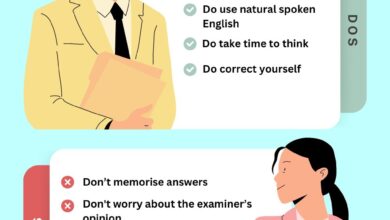How to Master the Transition from PTE Mock Tests to IELTS
In the realm of language proficiency examinations, the journey from PTE (Pearson Test of English) mock tests to IELTS (International English Language Testing System) can be both challenging and rewarding. As an expert in language assessment, I understand the nuances of this transition and the significance it holds for individuals seeking to prove their English language proficiency. Let’s delve into the intricacies and explore the path to success.
Understanding the Basics
To begin with, both PTE and IELTS are standardized tests designed to evaluate your ability to use and understand the English language. However, they differ in their formats and assessment criteria. PTE is known for its computer-based format, while IELTS incorporates face-to-face interviews. Recognizing these distinctions is crucial for a seamless transition.
PTE Mock Tests: Building the Foundation
Embracing the Digital Realm
PTE’s computerized format often appeals to individuals comfortable with technology. The test covers speaking, writing, reading, and listening, providing a holistic evaluation. Engaging with PTE mock test becomes a stepping stone, offering a simulated experience of the actual examination.
Focused Preparation
PTE mock tests serve as diagnostic tools, highlighting strengths and weaknesses. Analyzing your performance in each section helps in tailoring your study plan. Whether it’s enhancing your vocabulary or refining your speaking skills, targeted preparation is key.
Time Management
One of the critical skills honed during PTE mock tests is effective time management. The test’s strict time constraints prepare candidates for the pace required in real-time situations, a skill that proves invaluable in the IELTS environment.
Transitioning to IELTS: Navigating the Terrain
Emphasis on Human Interaction
Moving from PTE to IELTS brings a shift from a fully computerized environment to a more human-centric approach. IELTS involves face-to-face interviews for the speaking section, emphasizing real-time communication skills.
Adapting to Varied Accents
While PTE focuses on standardized accents, IELTS exposes candidates to a range of English accents. Familiarizing yourself with diverse accents through resources like podcasts, interviews, and documentaries can significantly enhance your listening skills.
Structuring Written Responses
In the writing section, IELTS requires a more traditional approach compared to PTE’s integrated tasks. Practice structuring essays and reports coherently, adhering to the conventions of academic writing.
Cultivating Speaking Confidence
The speaking section in IELTS demands not only linguistic proficiency but also confidence in expressing ideas verbally. Engaging in conversations, participating in discussion groups, and seeking feedback can bolster your speaking skills.
Strategies for a Seamless Transition
Bridging the Gap: PTE to IELTS
- Hybrid Practice: Integrate IELTS practice sessions into your PTE preparation routine. This ensures a gradual and seamless transition.
- Cross-Functional Skills: Identify skills common to both tests, such as vocabulary building and effective time management, to maintain continuity in your preparation.
- Mock Interviews: Simulate IELTS speaking sessions with a language partner or tutor to acclimate yourself to the face-to-face interview format.
- Feedback Loop: Actively seek feedback on your performance in both PTE mock tests and IELTS practice sessions. Constructive criticism is a catalyst for improvement.
The Journey Ahead
Mastering the transition from PTE mock tests to IELTS is not merely a shift in examination formats; it’s a holistic evolution of language proficiency. Embrace the challenges, leverage your PTE foundation, and refine your skills to align with the unique demands of the IELTS assessment.
In conclusion, as you embark on this transformative journey, remember that each step forward is a stride toward linguistic excellence. The path may be challenging, but the destination—success in the IELTS examination—is worth the effort.
Exploring Deeper: Navigating Specific Challenges
Overcoming Speaking Anxiety
The shift to IELTS introduces a face-to-face speaking component, potentially inducing anxiety. Combat this by engaging in regular conversations with native speakers or fellow test-takers, gradually building your confidence.
Mastering IELTS Writing Styles
PTE’s integrated tasks may have honed your ability to multitask, but IELTS demands a more focused approach to writing. Practice essays, reports, and letters regularly, adhering to IELTS-specific guidelines for each.
Enhancing Listening Skills
IELTS listening sections often involve nuanced conversations, requiring acute listening skills. Diversify your listening sources, incorporating various English accents and speeds to ensure adaptability during the exam.
Building Vocabulary for IELTS
While PTE emphasizes a broad range of vocabulary, IELTS values lexical resource more deeply. Expand your vocabulary in a targeted manner, focusing on academic and formal language relevant to IELTS tasks.
The Holistic Approach to Success
Transitioning from PTE mock tests to IELTS is not a linear process but a dynamic journey of refinement. Beyond the mechanics of each test, cultivate a love for the English language. Read extensively, immerse yourself in English media, and observe language nuances in real-world contexts.
Remember, this journey is not just about passing an exam; it’s about becoming proficient in a language that opens doors to global opportunities. Celebrate each milestone, learn from challenges, and embrace the growth that accompanies your linguistic evolution.
In conclusion, the transition from PTE to IELTS is not just a test change; it’s a metamorphosis of your language skills. Your commitment, adaptability, and perseverance will undoubtedly pave the way for success in the IELTS examination and, more importantly, in your ongoing language journey.



